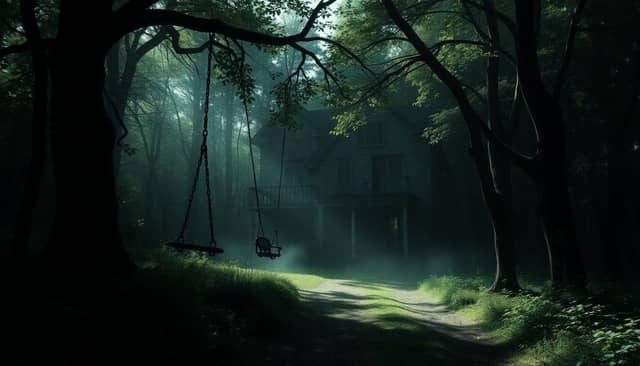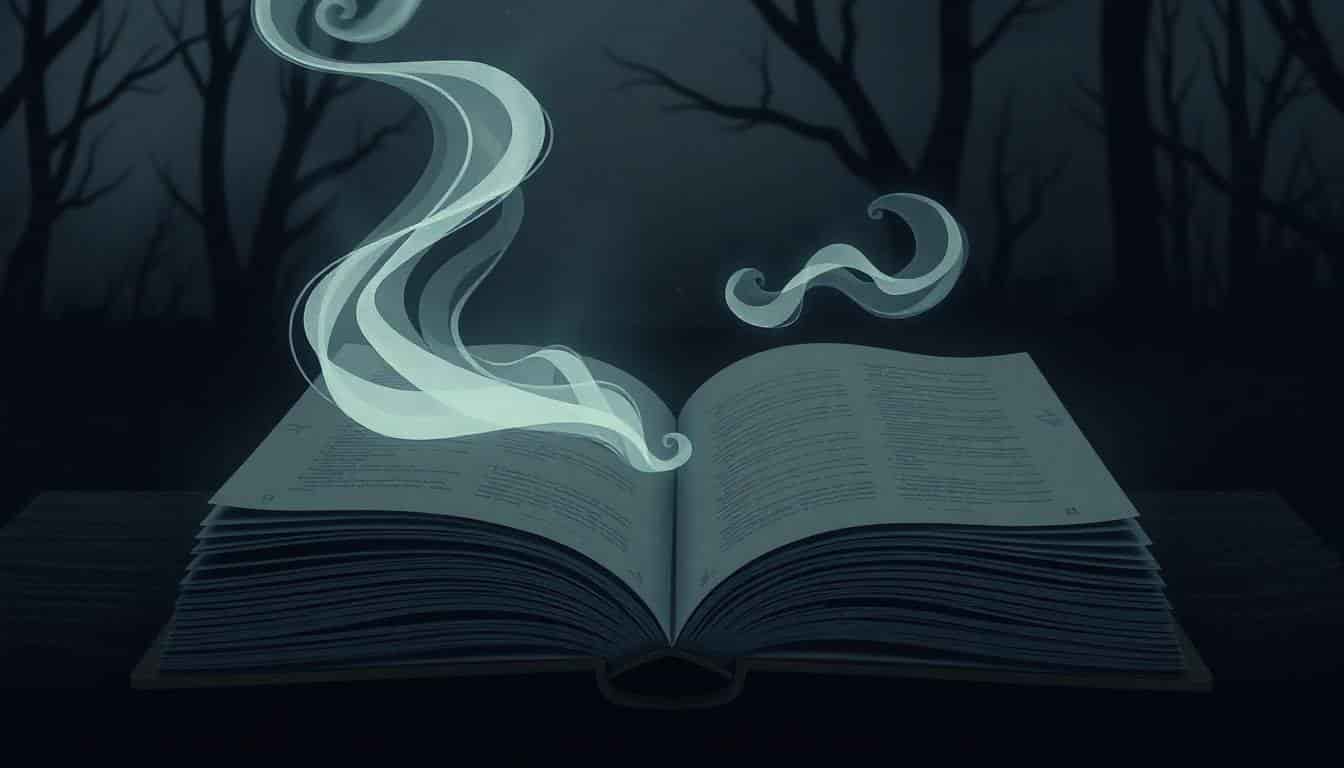Table of Contents
Ever felt the urge to send chills down someone’s spine but didn’t quite know where to start? Writing horror can be tricky, especially when you want to truly terrify your readers.
Don’t worry, I’ve got your back. Together, we’ll uncover the secrets to crafting horror stories that keep readers up at night.
From conjuring compelling ideas to building suspenseful plots, let’s dive into making your horror storytelling downright haunting.
Key Takeaways
- Start with a unique and terrifying idea by tapping into personal and universal fears.
- Use common horror themes and tropes but twist them to avoid clichés.
- Create relatable, multi-dimensional characters to engage readers emotionally.
- Design an immersive setting that enhances the horror and stimulates the senses.
- Control pacing to build suspense, using foreshadowing and misdirection effectively.
- Explore psychological aspects of fear and ground your story in realistic situations.
- Build tension with effective dialogue and keep the antagonist’s secrets to maintain mystery.
- Structure your plot with a strong climax and consider leaving a lingering sense of unease.

1. How to Create a Compelling Horror Story Idea
Crafting a gripping horror story begins with a unique and terrifying concept. Think about what truly frightens you. Is it the unknown lurking in the shadows, the loss of a loved one, or perhaps an inexplicable presence watching you?
Start by brainstorming a list of fears and phobias. Consider both universal fears and personal anxieties. This could range from fear of isolation to more specific fears like claustrophobia.
Did you know that between 2022 and 2023, sales of horror and ghost stories rose by 54% in value to £7.7 million? This surge highlights a growing appetite for horror fiction, making it the perfect time to bring your chilling ideas to life.
Combine ordinary situations with extraordinary elements. For example, imagine a simple family dinner that takes a twisted turn due to a sinister secret.
If you’re feeling stuck, try using a horror story idea generator to spark your creativity and explore new concepts.
2. Use Common Horror Themes and Tropes
Familiar horror themes and tropes can be powerful tools when used thoughtfully. They tap into collective fears and can make your story resonate with a wider audience.
Some classic themes include haunted houses, cursed objects, or encounters with the supernatural. Tropes like the “final girl,” the “creepy child,” or the “unseen terror” can add depth and tension.
It’s important to put your own twist on these themes to avoid clichés. For instance, if your story involves a haunted location, perhaps the haunting is a misunderstood plea for help rather than malevolent.
Subverting expectations keeps readers on their toes. Use common tropes as a foundation, then build upon them in unexpected ways to keep your story fresh and engaging.
For more inspiration on crafting unique plots, check out these horror story plot ideas.
3. Build Relatable and Multi-Dimensional Characters
Characters are the heart of your horror story. Creating relatable and multi-dimensional characters will make readers invest emotionally in their fate.
Develop backstories that explain their fears, motivations, and flaws. Maybe your protagonist has a fear of abandonment stemming from a childhood experience.
Give them strengths and weaknesses. A character who is resourceful but skeptical might dismiss warnings until it’s almost too late.
Even your antagonist should have depth. A well-rounded villain with understandable motives can be more unsettling than a purely evil entity.
Remember, the more real your characters feel, the more impactful the horror elements will be.
If you’re interested in exploring character development further, especially in complex settings, here’s a guide on how to write a dystopian story that may offer valuable insights.

4. Design a Creepy and Immersive Setting
Creating a haunting atmosphere is key to a successful horror story. The setting should envelop readers, making them feel as if they’re right alongside your characters. Think of places that naturally evoke fear—a dilapidated house at the end of the street, an abandoned asylum, or a dense forest where sunlight barely penetrates.
Use descriptive language to engage the senses. What does the air smell like? Is it damp and moldy? Do the floorboards creak underfoot? Details like the rustling of leaves, distant whispers, or flickering lights can add layers of tension.
Remember, the setting isn’t just a backdrop; it’s an active component of your story. It can influence your characters’ emotions and decisions, amplifying the overall sense of dread.
If you’re seeking inspiration to craft unique worlds, these fantasy world ideas might spark your creativity.
5. Control Pacing for Maximum Suspense
Pacing is a powerful tool in horror writing. It dictates how and when your readers feel tension or relief. Start by establishing a slow, methodical rhythm to build suspense. Use longer sentences and detailed descriptions to draw readers into the world.
As the story progresses, gradually quicken the pace. Short, choppy sentences can mimic a racing heartbeat during intense moments. This contrast keeps readers engaged and mirrors the characters’ escalating anxiety.
Be strategic with your timing. Placing a frightening event after a moment of calm can catch readers off guard. Similarly, giving brief respites allows them to catch their breath before the next scare.
For more on crafting a gripping narrative, you might find these plot generator ideas helpful.
6. Focus on Universal Human Fears
Tapping into fears that many people share makes your horror story more impactful. Themes like the fear of the unknown, death, isolation, or loss of control resonate deeply.
Consider what scares you personally. Chances are, others find it frightening too. Incorporate these elements to create authentic and compelling horror. For instance, the dread of being watched when you’re alone can be a powerful motif.
By exploring universal fears, you connect with readers on an emotional level, making the horror more immediate and intense.
7. Implement Foreshadowing and Misdirection
Foreshadowing and misdirection keep readers guessing and build suspense. Drop subtle hints about what’s to come—a eerie painting, a broken mirror, or a cryptic message. These clues should make sense in hindsight, rewarding attentive readers.
Misdirection involves leading readers to expect one outcome before surprising them with another. For example, a character might hear strange noises and believe it’s a ghost, only to discover a more sinister, unexpected cause.
Balancing these techniques maintains intrigue and prevents the story from becoming predictable.
8. Craft Memorable and Chilling Villains
Your antagonist drives the horror in your story. Whether it’s a vengeful spirit, a serial killer, or an otherworldly creature, they should be complex and unsettling.
Develop their backstory and motivations. What drives them to commit terrifying acts? A well-rounded villain with relatable motives can be more frightening than a one-dimensional monster.
Give them distinctive traits—a haunting laugh, an unusual appearance, or a specific method of haunting. These details make them stand out and linger in the reader’s mind.
9. Heighten Tension with Effective Dialogue
Dialogue isn’t just about conveying information; it’s an opportunity to build tension and reveal character. Use conversations to hint at secrets, expose fears, or escalate conflicts.
Let characters speak naturally, but with purpose. Pauses, stutters, or evasive answers can indicate anxiety or deceit. Overheard whispers or ominous warnings from secondary characters can add layers of mystery.
Remember that sometimes, silence speaks louder than words. What characters choose not to say can increase suspense.
10. Explore Psychological Aspects of Fear
Psychological horror delves into the mind, blurring the lines between reality and imagination. Explore your characters’ inner turmoil. Are they experiencing hallucinations, paranoia, or obsessive thoughts?
An unreliable narrator can add depth and confusion, forcing readers to question what’s real. By immersing readers in the character’s psyche, you create a more intimate and unsettling experience.
Addressing mental and emotional fears can be just as, if not more, terrifying than external threats.
If you’re interested in deepening your characters’ psychological profiles, these character writing prompts might be useful.
11. Base Your Story in Realistic Situations
Grounding your horror in reality makes it more relatable and frightening. Setting your story in a familiar environment—a suburban neighborhood, a school, or an office—can make the supernatural elements more jarring.
Incorporate everyday routines and mundane details to lull readers into a sense of normalcy before introducing the horror. When the unsettling events occur, they’ll have a stronger impact because they disrupt the familiar.
This approach also allows readers to imagine themselves in the situation, heightening the fear factor.
12. Create Personal Stakes for Characters
Your characters should have something valuable to lose. Personal stakes add urgency and emotional weight to the story.
Whether it’s protecting a loved one, uncovering a family secret, or overcoming a personal fear, these motivations drive characters to face terrifying challenges.
By emphasizing what’s at risk, you make the characters’ struggles more compelling and give readers a reason to root for them.
13. Use Contrast to Build Tension
Contrast heightens the impact of horror elements. Juxtapose moments of light and darkness, safety and danger, or joy and despair.
For example, a cheerful festival in a small town might hide a dark secret. The innocence of a child’s laughter against a sinister backdrop can be particularly chilling.
These contrasts can make the scary moments more unexpected and intense, keeping readers engaged.
14. Keep the Antagonist’s Secrets
Mystery enhances suspense. Reveal information about your antagonist slowly, keeping readers and characters in the dark.
Allow rumors or fragmented stories to hint at the antagonist’s nature. This uncertainty keeps readers guessing and builds tension.
When you do reveal key details, ensure they have a significant impact on the story and the protagonist’s journey.
15. Structure Your Plot with a Strong Climax
A compelling climax is essential for a satisfying horror story. It’s the culmination of the tension and conflicts you’ve built throughout the narrative.
Ensure that the climax addresses the central conflict and pushes your protagonist to their limits. This is where they face their deepest fears or make critical decisions.
After the climax, consider leaving a lingering sense of unease. An open-ended conclusion or a final twist can leave readers pondering long after they’ve finished the story.
For guidance on crafting impactful endings, you might explore how to structure a powerful climax in your narrative.
FAQs
To create a unique horror story idea, combine familiar horror elements with personal experiences or fears. Flip common tropes or explore untapped settings to offer a fresh perspective in the genre.
Key elements include pacing, foreshadowing, and atmosphere. Gradually reveal information, use misdirection, and create tension through setting and character development to keep readers engaged and anxious.
Create characters with depth by giving them relatable motivations, fears, and flaws. Multi-dimensional characters make readers invested in their fate, intensifying the horror when they face terrifying situations.
Balance psychological horror with physical scares to enhance your story. Psychological elements tap into deep-seated fears, while physical scares provide immediate shocks; combining both creates a more immersive experience.



